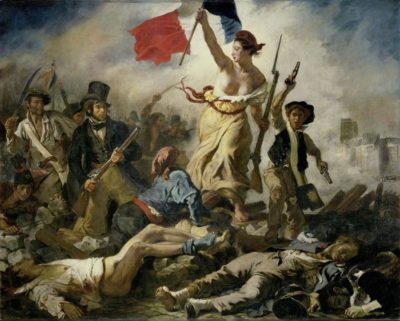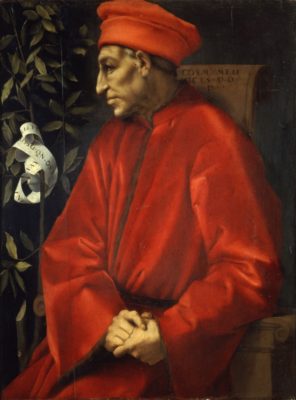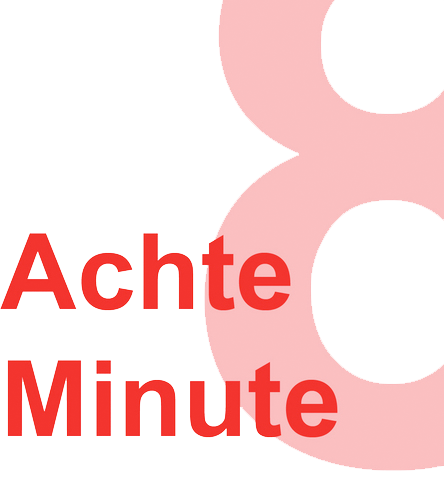History debates in a nutshell
Apart from regular tournaments with debates around topics that generally move – or should move – society, there are some examples were debaters just combine some of their various interests. This led German debaters to establish their very own ruleset for what they call “history debates”, ultimately resulting in history tournaments. Additionally, a history debate sometimes even gets set for one round of a regular tournament. In this article, we will introduce you to this feature – maybe you even want to do your own history debate?

Eugène Delacroix – Le 28 Juillet. La Liberté guidant le peuple – source: artsy.net
History debates are interesting for many reasons. Firstly, they compare alternate timelines to our reality: What could have happened, if? Additionally, they can help with understanding decisions made in former times in a different way: What do people need to think, feel and believe to come to certain conclusions? Lastly, they are fun for history loving people and a great possibility to show off your knowledge.
Basically, history debates are different from regular debates in three important regards:
1. The motion:
The topic of the debate is a question raised somewhen before what would be considered “the present”. This can be 2 years ago as well as thousands of years ago. Usually, it is about some actual or at-that-point-in-time-possible choice and can either be from a general perspective or a first-person-debate. At the beginning of the motion, the date for the debate is set, e.g.: “It’s the 17th of January 1793. TH, as French National Assembly, would sentence Louis XVI. to death and execute him publicly.” Of course, for many of the motions it’s generally a good idea to give everyone a fact sheet with basic information about what happened so far.
2. The frame:
For the debate everyone – debaters and adjudicators – pretend being on the state-of-knowledge and mindsets of the time set. This means that they must not build arguments based on knowledge that was gained later (like the actual course history took or inventions made later) and includes dealing with the place and moral values of that time as well. The motion should of course be balanced for this frame, offering good opportunities for all teams to make contributions which could have been persuasive (and seem logic) at that point of time. This can include making arguments based on the existence of god or the unhealthiness of bathing, depending on the time and motion. Adjudicators, of course, also try their best to exclude their own knowledge and should judge based only on the persuasiveness of what was brought to them and is a fair argumentation for the time set.

Jacopo da Pontormo – Ritratto di Cosimo il Vecchio – source: Google Art Project
3. Equity:
Obviously, leading a debate from a perspective of sometimes obsolete values and about relevant historical topics can touch sensitive areas like colonialism, patriarchic society structures, war and religious fanatism. Thus, it’s even more important than in regular debates that everyone keeps in mind that the arguments brought by the teams are not necessarily representing their own opinion but rather opinions that could have been brought into debates back then. Also, there is no need to act in your speeches – there is no need for costumes or antiquated language including insulting terms. Basically everyone should just be sensitive when talking. To avoid uncomfortable situations this should be made clear to people before they attend a history tournament.
And that’s it. That’s how a history debate happens and that’s what you can find about once a year in Marburg at their history tournament. Maybe you already want to start doing your first history debate now? In any case, here are some of the motions that appeared at German history debates over the years (random order, missing fact sheets will be restored later if possible):
Motion 1: It’s 1990: THBT Canada should grant the Inuit the right to sell their right of shooting walruses.
Fact sheet: In 1928 Canada banned walrus hunting. However, the state made an exception for the Inuit, indigenous autonomous people whose way of life developed over 4500 years around walruss hunting. They allowed the Inuit to kill a certain number of animals per year in order to keep up their way of life culturally and economically. For this debate it is assumed, that the state of Canada is not willing to buy the hunting rights from the Inuit itself.
Motion 2: It’s July 1945: TH, as US government, would use the bomb against Japan.
Fact sheet: After the end of the war in Europe on the 8th of May 1945, the Second World War continues unchanged in East Asia. Japan is strongly convinced to surrender under no circumstances, thus leading a costly defense since 1944 in order to wear out the Allies for the purpose of negotiating agreeable peace conditions. This strategy costs amongst other sacrifices 100000 civilian lifes in East Asia every month. Simultaneously, the public in the USA gets tired of war, leading to congress demobilizing parts of the army. To change the course of the war under those circumstances, a new option gets available after the succesful Trinity test on the 16th of July 1945: The nuclear bomb. The British agreed to the use of such a new weapon in advance. The US army’s leadership, however, believes it won’t be necessary to use it. The Sowjets, who didn’t participate in the East Asian war so far, just got vague hints about the existence of a potent bomb via official channels.
Motion 3: It’s about 10000 years ahead of our time. THBT humanity should abandon sedentariness.
Motion 4: It’s 1923. THBT Mustafa Kemal should consequently orientate Turkey towards Europe.
Fact sheet: The Ottoman Empire existed between ca. 1299 and 1922 and was a multinational state. The population census of 1906 counted 74-76% of the population as being Muslims. After the fall of the empire in the First World War a national goverment under general inspector Mustafa Kemal prevailed. 1923 the Republic of Turkey gets founded in its today’s borders. At the start of his rule the new leader Mustafa Kemal proclames deepgoing reforms in the political and social system, aiming to change Turkey into a modern, secular and Europe orientated state. This would amongst other things include: Abolishing the Sultanate, the Kalifate, religious courts and orders and the Islamic Calendar along with introducing the Gregorian Calendar, the metric system and coeducation. Mustafa Kemal also plans partly adapting to the jurisdiction of various European systems and replacing the Arabic with the Latin alphabet. Some of his most important partners threaten to break up and found an opposition party. The stronlgy religous East Anatolian region is expected to resist bitterly.
Motion 5: It’s 1076. TH, as King Heinrich IV (Henry IV of Germany), would not go to Canossa.
Motion 6: It’s 1420. TH, as Cosimo de Medici, would only support art which pictures humans as invidiuals.
Fact sheet: In medieval times people understood themselves mainly as part of the bigger picture (e.g. as part of a familiy, a municipal or a people). This begins to change with the Renaissance. People increasingly understand themselves as indivuals, as acting subjects. Art is playing a key part. Racial artists break with symbolic and religious conventions of the Gothic and try to portrait humans in their individuality with all their attributes – positive and negative ones -, isolating them from the mass. Humans portrait don’t stand for their role but for their selves. Instead of an ideal, reality becomes the benchmark of illustration. Many of those artists live in the rich city staty republic of Florence, where the Medici family is highly influentual. Despite their head, Cosimo de Medici, not holding any office, everyone knows he’s the one deciding the city’s affairs. The Medici are great patrons of art and use art purposely as a tool to represent their power.
Motion 7: It’s 1898. TH, as SPD (Sozialdemokratische Partei Deutschlands – Socialdemocratic Party of Germany), would try to overcome capitalism with reforms instead of revolution.
Motion 8: It’s 1977. THBT Helmut Schmidt should negotiate about the exchange of Schleyer for releasing RAF-Members.
Fact sheet: The abduction of Hanns Martin Schleyer, president of the Federal Union of German Employer Associations (Bundesvereinigung der Deutschen Arbeitgeberverbände – BDA) and the Federal Association of German Industry (Bundesverband der Deutschen Industrie – BDI) by the extreme leftist terror organisation Red Army Fraction (Rote Armee Fraktion – RAF) on the 5th of September 1977 and his assassination on the 18th of October 1977 were the central events of the so-called German Autumn (Deutscher Herbst). The terrorists demanded the Federal Government under chancellor Helmut Schmidt to exchange eleven first-generation captive RAF-members for the release of Schleyer. At the same time palestinian terrorists allied with the RAF abducted the airplane “Landshut”. The Federal Government refused to negotiate with terrorists and retook the Landshut by storm. An attempt of Schleyer’s family to force the Federal Government to negotiate by emergency appeal at the Federal Constitutional Court failed. Subsequently three of the captive RAF-members hanged themselves and Schleyer got murdered.
Motion 9: It’s early 1991, shortly after the German Reunification: TH, as the BRD (Bundesrepublik Deutschland – Federal Republic of Germany), would not prosecute basic DDR (Deutsche Demokratische Republik – German Democratic Republic) border soldiers for following shooting orders.
Motion 10: It’s the 3rd of April 1948: THBT the USA should exclude Western German allied occupation zones from the Marshall plan.
Motion 11: It’s the 17th of January 1793. TH, as french National Assembly, would sentence Louis XVI. to death and execute him publicly.
Motion 12: It’s 1960. THBT it is in Israel’s interest to have an international court do Adolf Eichmann’s trial. Fact sheet: Missing.
Motion 13: It’s the 5th of July 1914. TH, as German Empire, would grant Austria-Hungary a „blank check” for the conflict with Serbia.
Fact sheet: At the beginning there were different opinions is Austria-Hungary about how to react on the assassination in Sarajewo. Some demanded immediate mobilisation against Serbia. Others “just” demanded to be granted unlimited investigation rights in Serbia, to proof their expected participation in the assassination. Without having made a final decision, they waited for their ally, the German Empire, to see if they backed them. Thus, legation councilor Alexander Hoyos traveled to Berlin on the 5th of July 1914 to ask the German Empire for complete freedom of action in the conflict with Serbia (“blank check”).
Motion 14: It’s the end of 1862. TH, as Abraham Lincoln, would renounce the abolishment of slavery under the condition of this ending the civil war.
Fact sheet: The Union’s constitution left it to the individual states to decide about the question of slavery. Around 1850 there were ca. 7m white people living in the South as well as 3,8m slaves. At least since the 1830s North and South were alienating. Shortly after the election of Lincoln 1860 the Southern states seperated themselves als the Confederation and attacked the North in 1861. Both war parties first expected to win the war fast. However, in late 1862 they found themselves in a deadlock. In September 1862 the government of Abraham Lincoln declares the abolishment of slavery in the South in the “Emancipation Proclamation”. The Proclamation is planned to become operative on the 1st of January 1863.
Motion 15: It’s February 44 BC. TH, as Brutus, would join the conspiracy around Cassius to murder Caesar.
Fact sheet: Since the middle of the 2nd century BC the Roman Republic experienced internal crisis, resulting in an era of civil wars. In the civil war in the middle of the 1st centry BC Marcus Iunius Brutus fought against Caesar on Pompeius’s side. After Pompeius’s defeat, who got murdered when fleeing to Egypt, Caesar was in fact sole ruler of the Roman Empire and Brutus asked him for forgiveness, which Caesar immediately granted. He even made him one of closest confidants. Brutus was historically characterised as analytic person who cared a lot about the Republic. In February 44 BC Caesar arranges to be granted lifelong dictatorship. Brutus’s friend and brother-in-law Gaius Cassius Longinus now asks Brutus to join a group of conspirators who are planning to murder Caesar.
Motion 16: It’s early 1961. TH, as the USA, would strive for a mutual pact of neutrality with Cuba.
Fact sheet: After the Cuban revolution in 1959, Castro wanted to keep good relations with the USA. However, the US government rejected him because of this alliance with the communists. The UdSSR started diplomatic relations with Cuba in May 1960. In October 1960, the US government prohibited exporting oil to Cuba and importing anything from there. In reaction, the Soviet political bureau promised economical and military support. Castro himself implemented “marxist” reforms. Amongst other things, US companies got expelled from Cuba and American oil raffineries seized. After the revolution the CIA did countless assassination attempts on Castro, which all failed. Thus, the CIA finally developed a plan for an invasion (Bay of Pigs Invasion), which got approved by Eisenhower and was planned for April 1961. In 1961, the democrat John F. Kennedy takes over the presidency from Eisenhower and learns about the planned invasion.
Motion 17: It’s autumn 1923. TH, as the Western allied, would completely waive Germany the reparations.
Motion 18: It’s 1990 briefly before the German Reunification. TH, as BRD (Bundesrepublik Deutschland – Federal Republic of Germany), would adapt „Auferstanden aus Ruinen” (the DDR (Deutsche Demokratische Republik – German Democratic Republic) anthem) as national anthem for the united Germany.
Fact sheet: [The original fact sheet had the lyrics of “Auferstanden aus Ruinen” in German. Since this isn’t of much use to understand/repeat the debate in another language, please find them in your own language on the internet as well as the historically prevailing anthem “Lied der Deutschen”. Additional information for non-Germans and the original fact sheet is added beneath by the Achte Minute team:] „Lied der Deutschen” was the German anthem since 1922 and it’s 3rd stanza was the official anthem of the BRD. The 1st and 2nd stanza were abandoned by the BRD due to their German-glorification and massive use in Nazi Germany.
The lyrics of the DDR’s national anthem were written by Johannes R. Becher, probably in October 1949, the melody was composed by Hanns Eisler. After the DDR officially distanced itself from the idea of unifying Germany, the lyrics vanished from the public and the anthem was only performed instrumentally. In January 1990 it was announced that TV and radio would send the anthem with the lyrics of Johannes R. Becher again.
Motion 19: It’s 1952. Assuming, the Stalin Note is meant seriously: THBT the BRD (Bundesrepublik Deutschland – Federal Republic of Germany) should agree to the Stalin Note.
Fact sheet: Missing.
Motion 20: It’s the 23rd of May 1618. TH, as the Bohemian Estates, would dethrone King Ferdinand and elect a Protestant king.
Fact sheet: 1517 Martin Luther started the Reformation in the Holy Roman Empire and Europe. Central criticism of the Reformation movement were the secularisation of huge parts of the clerus as well as apparingly unnecessary rituals of faith. Protestants uphold the principle “sola scriptura, sola fide” – “Only through the Scripture, only through faith” (…we find salvation).
Following the Reformation the Augsburg Settlement (Augsburger Reichs- und Religionsfrieden) was signed between (Catholic) Emperor and Protestants in 1555 to deescalate the potential of conflict. The settlement arranged that the territorial sovereign determined his subject’s religion, whilst the subjects were free to emigrate. 1608, as a reaction on the Emperor enacting recatholisation measurements, Friedrich IV., Elector Prince of the Palatinate, founded the Protestant Union as a defensive alliance against the Catholics, which was joined by major parts of the Protestant territories including the Electorates of Brandenburg and Saxony. The Protestant Union thus held 3 out of 7 Electorate votes necessary to elect the Emperor. The remaining Electorates were the Cathloc archbishoprics of Mainz, Trier and Cologne as well as the Kingdom of Bohemia.
In the Habsburgian war of succession of Emperor Rudolf II. against his brother Matthias, Emperor Rudolf II. had issued the so-called “Majestätsbrief” on the 6th of July 1609, a document granting the Bohemian Estates religious freedom, in order to keep his (Protestant) subjects in the Kingdom of Bohemia loyal. However, in 1611 mercenaries of Rudolf II. invaded Bohemia, leading the Estates to join Mathias’s side. After the conquest of Prague 1611 Matthias got crowned King of Bohemia and in 1612 inherited Emperorship after Rudolf’s death. Due to the high age (61) of childless Emperor Matthias the crown was in advance passed on towards his brother and heir Ferdinand of Habsburg. At this time, however, Friedrich V. of Wittelsbach, Elector Prince of the Palatinate, was secretly also considered to be elected king by the Bohemian Estates, as well as Johann Georg I. of Wettin, Elector Prince of Saxony. The latter, however, had already sent message, that he would rather refuse the crown in order to avoid conflict. After the election of his brother Ferdinand, now King of Bohemia, Emperor Matthias II. immediately started restricting the rights of the Estates and pressed further Bohemian recatholisation. Reacting to a letter of protest in May 1818, he finally abolished the Estates. The Estates, however, met again in May to discuss further action.
[A map was handed out along with the fact sheet and time given to read both and ask questions before announcing the motion. Link to the map.]
lok./jm.
Mittwochs-Feature: Every Wednesday at 10.00 a.m. the Mittwochs-Feature features an idea, interview or book regarding debate – usually in German, sometimes in English, sometimes both. If you would like to start a debate please mail us your idea to team [at] achteminute [dot] de.






